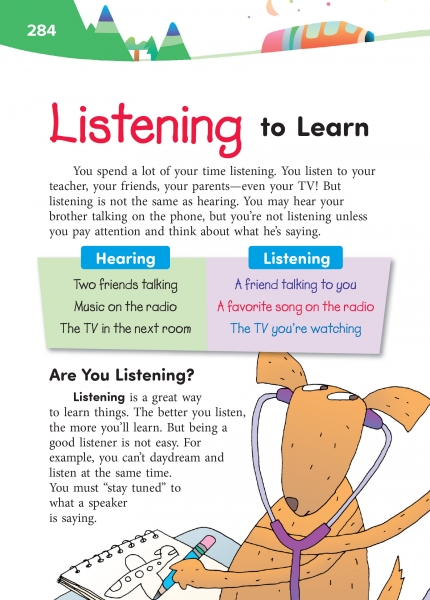Page 284 from

Start-Up Activity
Read through the information on page 284. Then ask students to provide more examples of what "hearing" is and what "listening" is. Afterward, have them list clues that tell them someone is or isn't really listening to them.
Let students know that this chapter helps them listen not just with their ears, but with their whole beings.
Think About It
“Listening is a positive act: you have to put yourself out to do it.”
—David Hockney

Start-Up Activity
Read through the information on page 284. Then ask students to provide more examples of what "hearing" is and what "listening" is. Afterward, have them list clues that tell them someone is or isn't really listening to them.
Let students know that this chapter helps them listen not just with their ears, but with their whole beings.
Think About It
“Listening is a positive act: you have to put yourself out to do it.”
—David Hockney